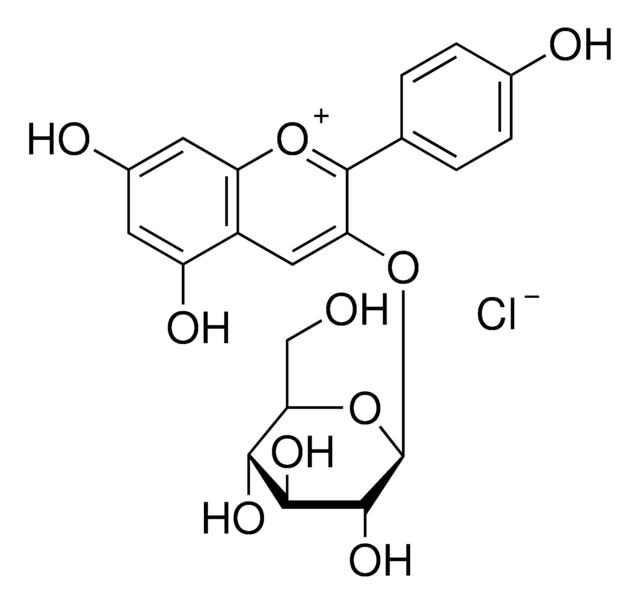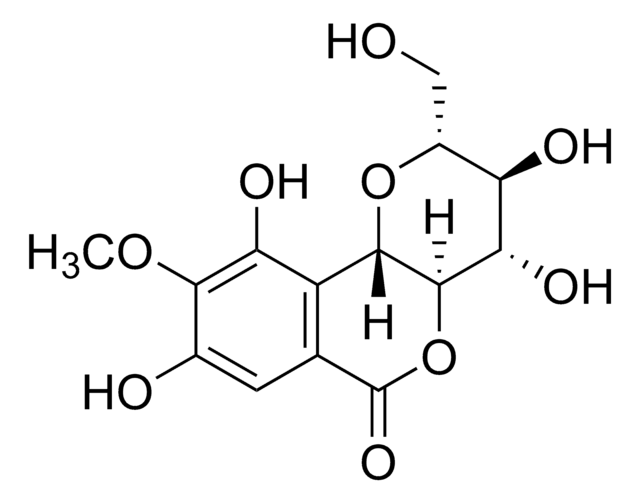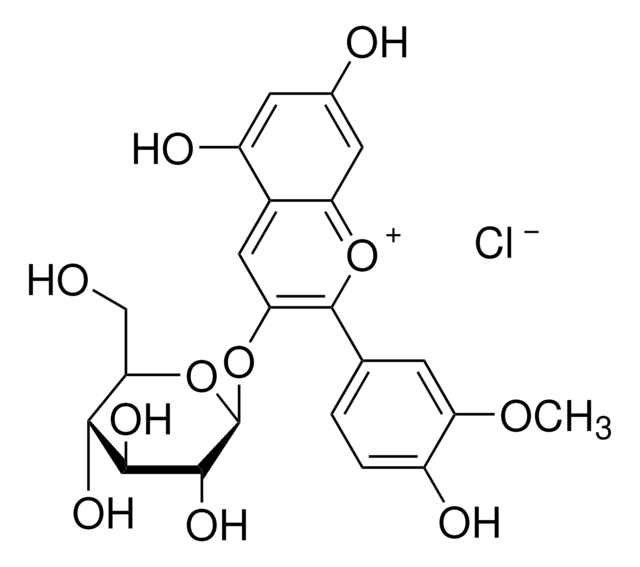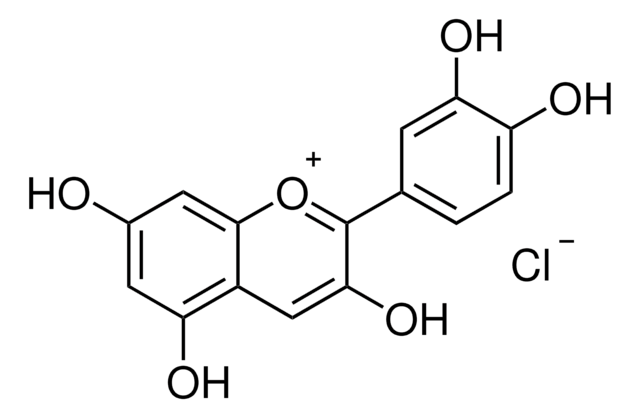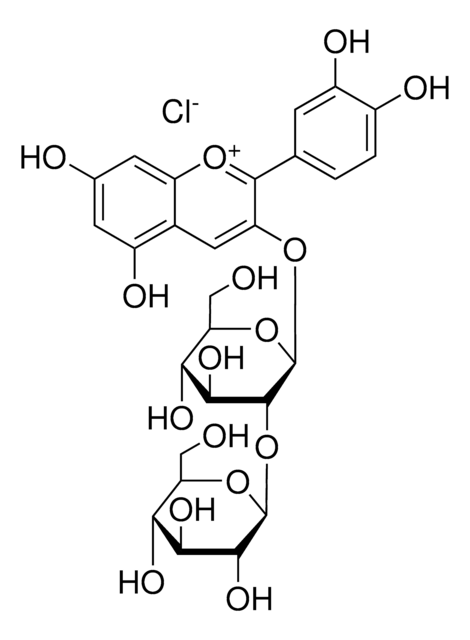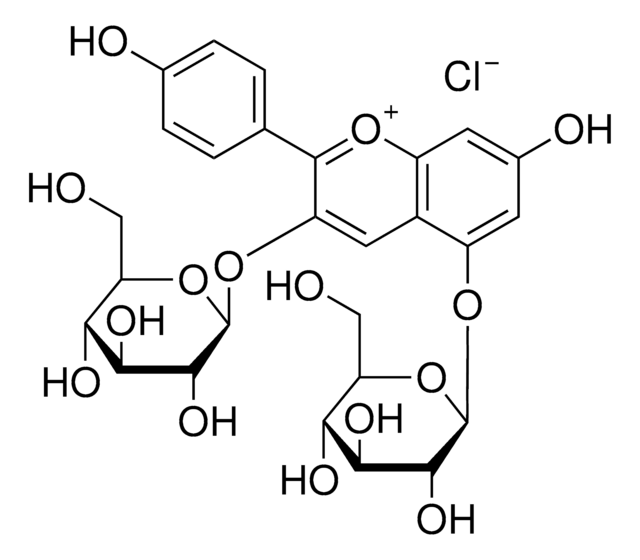Kluczowe dokumenty
53489
Callistephin chloride
≥95.0% (HPLC)
Synonim(y):
3-(Glucosyloxy)-4′,5,7-trihydroxyflavylium chloride, Pelargonidin 3-O-glucoside chloride
About This Item
Polecane produkty
pochodzenie biologiczne
synthetic
Poziom jakości
Próba
≥95.0% (HPLC)
Formularz
powder
Warunki transportu
wet ice
temp. przechowywania
−20°C
ciąg SMILES
[Cl-].OC[C@H]1O[C@@H](Oc2cc3c(O)cc(O)cc3[o+]c2-c4ccc(O)cc4)[C@H](O)[C@@H](O)[C@@H]1O
InChI
1S/C21H20O10.ClH/c22-8-16-17(26)18(27)19(28)21(31-16)30-15-7-12-13(25)5-11(24)6-14(12)29-20(15)9-1-3-10(23)4-2-9;/h1-7,16-19,21-22,26-28H,8H2,(H2-,23,24,25);1H/t16-,17-,18+,19-,21-;/m1./s1
Klucz InChI
CAHGSEFWVUVGGL-UBNZBFALSA-N
Szukasz podobnych produktów? Odwiedź Przewodnik dotyczący porównywania produktów
Działania biochem./fizjol.
Opakowanie
Kod klasy składowania
11 - Combustible Solids
Klasa zagrożenia wodnego (WGK)
WGK 3
Temperatura zapłonu (°F)
Not applicable
Temperatura zapłonu (°C)
Not applicable
Wybierz jedną z najnowszych wersji:
Masz już ten produkt?
Dokumenty związane z niedawno zakupionymi produktami zostały zamieszczone w Bibliotece dokumentów.
Klienci oglądali również te produkty
Nasz zespół naukowców ma doświadczenie we wszystkich obszarach badań, w tym w naukach przyrodniczych, materiałoznawstwie, syntezie chemicznej, chromatografii, analityce i wielu innych dziedzinach.
Skontaktuj się z zespołem ds. pomocy technicznej